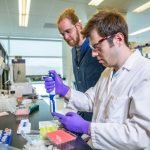Bronfenbrenner’s bioecological model is a theory of educational psychology that studies human development over time.
Urie Bronfenbrenner was a Russian-American developmental psychologist whose bioecological model was integral to the formation of American Headstart pre-kindergarten programs. [1] He was influenced by fellow developmental psychologist Lev Vygotsky. The model suggests the interactions between the individual and their environment, categorized into various systems, shape their development over time.
Contributors
- Urie Bronfenbrenner (1917-2005)
Key Concepts
Nested Systems
Bronfenbrenner conceptualized four ecological systems that an individual interacted with, each nested within the others. Listed from closest to the person to furthest:
1. Microsystem — The prefix “micro” comes from the Greek for “small,” and is the first and most immediate layer of the nested systems. It encompasses an individual’s human relationships, interpersonal interactions and immediate surroundings. An example of this system would be the relationship between an individual and his or her parents, siblings, or school environment.
2. Mesosystem — The second layer from the individual, surrounding the microsystem and encompassing the different interactions between the characters of the microsystem. For example, the relationship between the individual’s family and their school teachers or administrators. In order for an interaction to be considered part of the mesosystem, it has to be a direct interaction between two aspects of the microsystem that influences the development of the individual.
3. Exosystem — The exosystem is the third layer, and contains elements of the microsystem which do not affect the individual directly, but may do so indirectly. For example, if a parent were to lose their job or have their hours cut back, this would affect their child in an indirect way such as financial strain or increased parental stress.
4. Macrosystem — The prefix “macro” comes from the Greek for “large,” and is used because this system was thought to be all-encompassing. The fourth and outermost layer of the bioecological model, it encompasses cultural and societal beliefs and programming that influence an individual’s development. Examples of this would include gender norms or religious influence.
Criticism of the early model
Bronfenbrenner’s early model of the bioecological system has sometimes been criticized for not emphasizing the active role of the individual in his or her own development. As such, sometimes the individual’s own biological and identifying characteristics, such as age, health, sex or gender are considered the unofficial first layer of the nested systems.
In later iterations, a fifth stage is considered part of the bioecological model, called the chronosystem. This system focuses on the interaction between the various systems and how they affect one another over time. One instance of this would be parents scolding a child for disobedience, which is an instance of microsystem-macrosystem interaction. While the parents are members of the microsystem, they are reinforcing a cultural belief that children should always listen to their parents. The assumption is that over time, the child would grow up to be obedient.
Later Models
Process — Person — Context — Time (PPCT)
This model was later adapted to include the chronosystem, based on four establishing principles and their interactions which were Bronfenbrenner’s original basis for the bioecological theory:
Process — The developmental processes that happen through the systematic interactions mentioned above. What Bronfenbrenner referred to as proximal processes functioned as the primary mechanism of an individual’s development.
Person — This principle was establish to indicate the role of the individual and their personal characteristics in social interactions and their individual development. These characteristics include age, sex, gender, physical or mental health, and others. Some of these characteristics are more visible than others (such as age) and as such, are more easily measured over time.
Context — The (now five) systems of the bioecological model serve as the context for an individual’s development — the micro-, meso-, exo-, macro-, and chronosystems.
Time — The most essential element of the bioecological model. Because this model measures an individual’s development, these interactions occur on a measurable, chronological scale. Time influences the systemic interactions within an individual’s lifespan as well as across generations, such as in the case of “family values,” a set of morals or beliefs that are passed down between generations and shape development. This would be an example of microsystem interaction over time.
Additional Resources and References
References
- Bronfenbrenner, Urie, and Pamela A. Morris. “The bioecological model of human development.” Handbook of Child Psychology (2006).
- Bronfenbrenner, U., & Ceci, S. J. (1994). Nature-nurture reconceptualized in developmental perspective: A bioecological model. Psychological Review, 101(4), 568-586.
- Bronfenbrenner, U. (1994). Ecological models of human development. Readings on the Development of Children, 2(1), 37-43.



